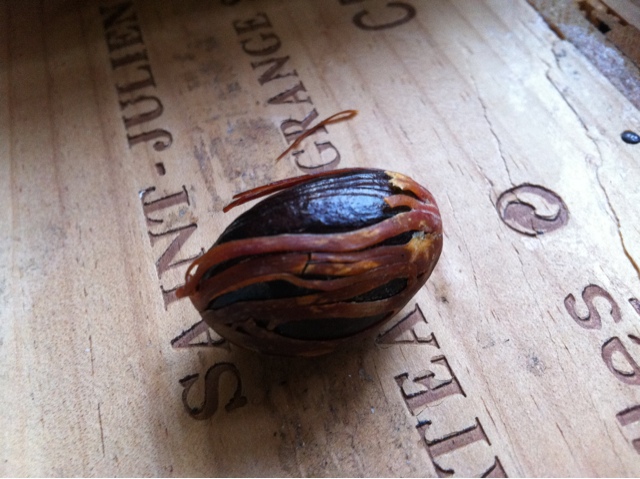In the frugal larder recently there has been carrot smudge for lunch (made regularly from the Moro cookbook, as in my June 2009 blog). At 90p per kg, carrots are easily the cheapest thing for supermarket-bound urban folks right now. And at the farmer's market we found sweetcorn cobs 4-for-a-pound - and I just can't get enough cauliflower and cabbage. All British, all wonderful.
So maximum deliciousness and minimum expense really leads me to steak and kidney. You can probably use delicious cuts of steak, but I rather think the point is to use the scraggy, sinewey ends which turn out so well after a gentle 4 hours of transformation. Offal may be getting more expensive the more that it is used in restaurants and in weekend-magazine recipes, however it is still wonderfully (if relatively) cheap: around 60 pence for two lamb kidneys at Waitrose this morning.
There are many delicious recipes and one day I will get through them all; however when I want to really enjoy a steak and kidney then my mother's recipe comes out. Only knowing how few people will read this will entice me to part with this treasured piece of my family cooking history. Brace yourself: 4 ingredients. 10 minutes to assemble; 4 hours to cook.
The butcher at the Ginger Pig goaded me into taking more meat than I needed: it really did look paltry, but I didn't explain it was only for two people. And supposed to be FRUGAL! So I took 12 oz of chuck steak (they were out of skirt) and 8 oz kidneys (5 oz lamb's kidney and 3 oz of pig's kidney - due to shortage in the shop rather than from preference). At home I carefully cubed the kidney to exclude sinew and tube, and tossed it in seasoned flour with the diced beef.
This went into a plastic pudding bowl and a china pie-blackbird nestled in the middle, in lieu of the upturned egg cup my mother always uses: this keeps the pastry from sinking soggily into the stew in the centre. I poured in cold water to almost cover the meat, then sat on top a layer of closed cap mushrooms, de-stalked and the right way up to look like floating pebbles: these also help the pastry stay above the stew.
The suet pastry is a marvel in its own right: so speedy to make! 4oz flour, 2 oz suet, seasoning and cold water to bind. This was plopped on top of the mushrooms and spread about to the edges so it covered the stew like a dimpled lid, sealing in the steam. I fitted on the plastic pudding basin lid, lashed around a helping of cling film and then foil (standing the bowl in the centre of a large square, pulling the corners up to meet over the top: to keep the water out), and boiled away for 4 hours, topping up the water to make sure it didn't dry out.
One thing that foxed me was the lack of trivet: I have no idea if anyone else even uses these, and if my teaspoons are ok as an alternative? It's how I usually do it, but I really must check up on this. It completely ruined the coating on my spoons, so if you also don't have a trivet, please use something you don't love.

A word on the plastic pudding basin: I used this as I haven't yet inherited a china pudding basin. Naturally I will never be a stern matriarch-type until I possess such a thing, but I do have two muslin cloths in amongst my aprons, for the day when I tie up a pudding with paper, cloth and string, like a proper ruler of the hearth and home. Until then, the plastic one is actually jolly fine.
After 4 steamy hours, what was the result? My best, most favourite taste-memory. Soft soft meats, a thin, inimitable gravy and a doughy, almost gluey pastry. Sprouts and boiled potato are the supreme companions but we spotted a delicious cabbage for this time. The gent was appreciative, as he always is, but was a little bemused at my delight. For me the pleasure lies not only in the lovely meal, but also in the alchemy: four basic ingredients transformed whilst I read the paper. What's not to love?






